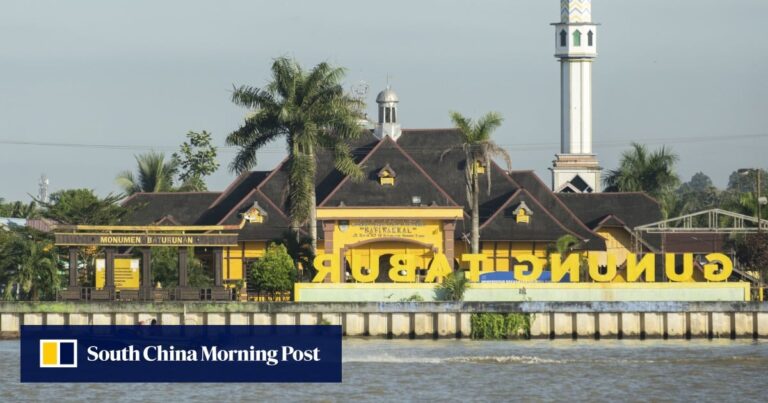Conrad, who died 100 years ago this summer, Heart of Darkness (1899), a novella set in the Congo on which the film is based. Apocalypse NowBut half of his writing is set in equatorial Asia, including several novels inspired by the river.
Before he was Conrad the writer, he was Conrad the sailor, a merchant seaman not yet 30 who spoke heavily accented English, his third language. (Born Józef Theodor Konrad Korzeniowski, he grew up in northern Ukraine as a vassal of the Russian czar.)
He served as first mate on the SS Vidar on four such voyages in 1887 and 1888, journeys that took several months round trip from Singapore, and after 10 hours in the blazing sun and sweltering heat on this noisy, rickety workboat, I gained a newfound respect for the men and women of this profession.
The river mouth begins to narrow as you approach a place known on old nautical maps as Lingard Crossing, a sea passage first surveyed by British merchant adventurer William Lingard in the mid-19th century.
Lingard was the first European to trade on the Berau River, mainly for rattan, rubber resin and gutta-percha (natural latex obtained from tree sap).
Conrad had never met Lingard but was well aware of his legend. Raja Raut“Lord of the Sea” – he intended to make an Englishman the central character of a trilogy of novels. In Conrad’s story, William Lingard becomes Tom Lingard, captain of the Flash, the fastest brig in the East, and the man who claims the river as his own.
Strong currents forced our boat’s captain, Widart, a heavy smoker and a quiet man, to anchor, and it was just after midnight when we set sail again, some 18 hours after we began our voyage.
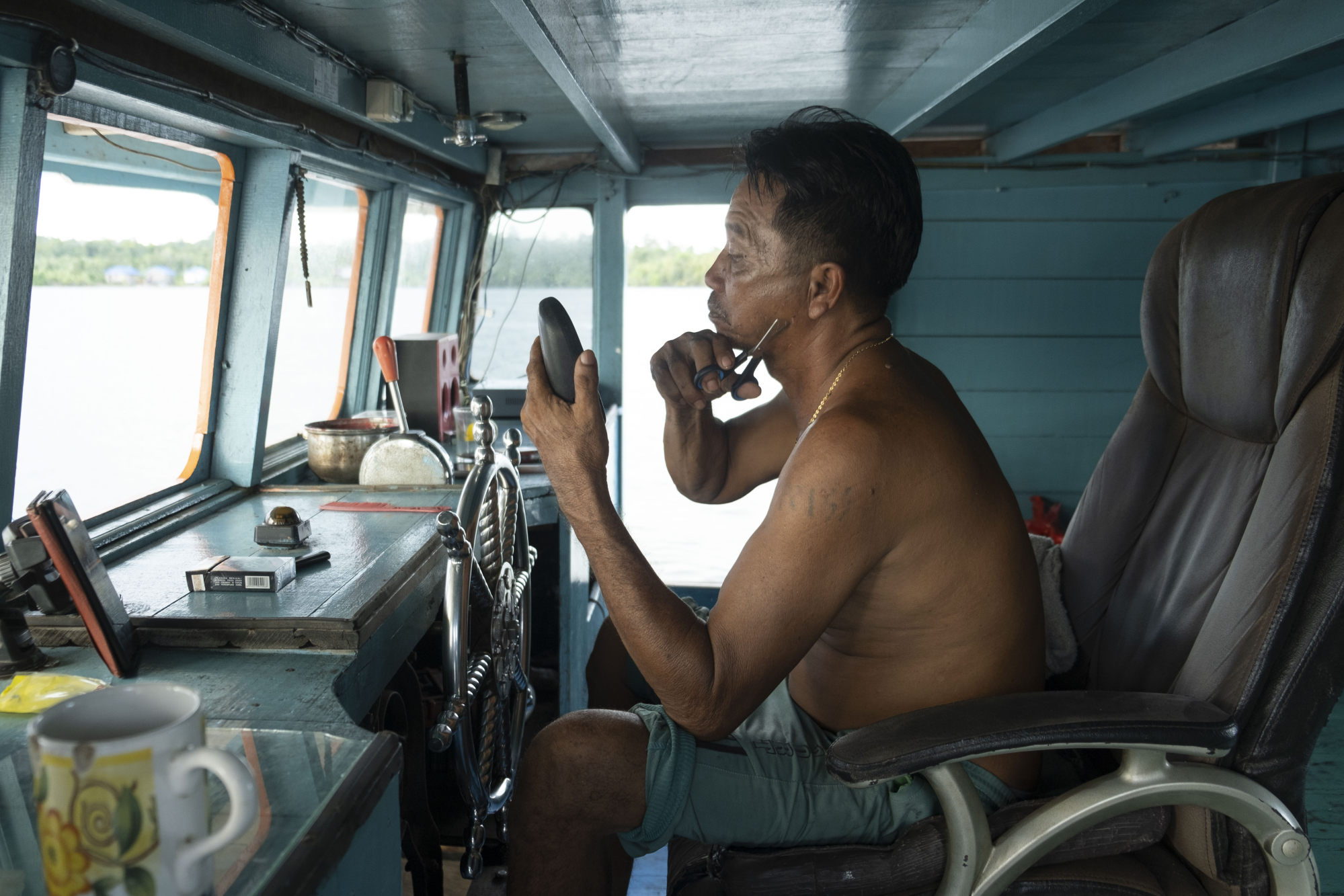
As we rounded a bend in the river we saw the lights sparkling against the silhouette of low hills, and the town of Berau came into view slowly, just as Conrad had seen it so long ago.
Formally known as Tanjung Ledev (Sambir in the novel), the town lies on a promontory where the Segai and Kerai rivers join to form the Berau River. In Conrad’s time it was a small trading post and is now the capital of Berau Regency in the Indonesian province of East Kalimantan.
With a population of 70,000, mostly ethnic Malays, Javanese and Bugis, it is best known for its open-cut coal mining industry, which produces 35 million tonnes of coal a year. That afternoon, as I strolled along the Segai River, huge barges were hauling piles of coal downriver for export, mainly to China.
Judging by recordings of swallows chirping from the rooftops, the town’s other main product is bird’s nests, also a must-have for the Chinese.
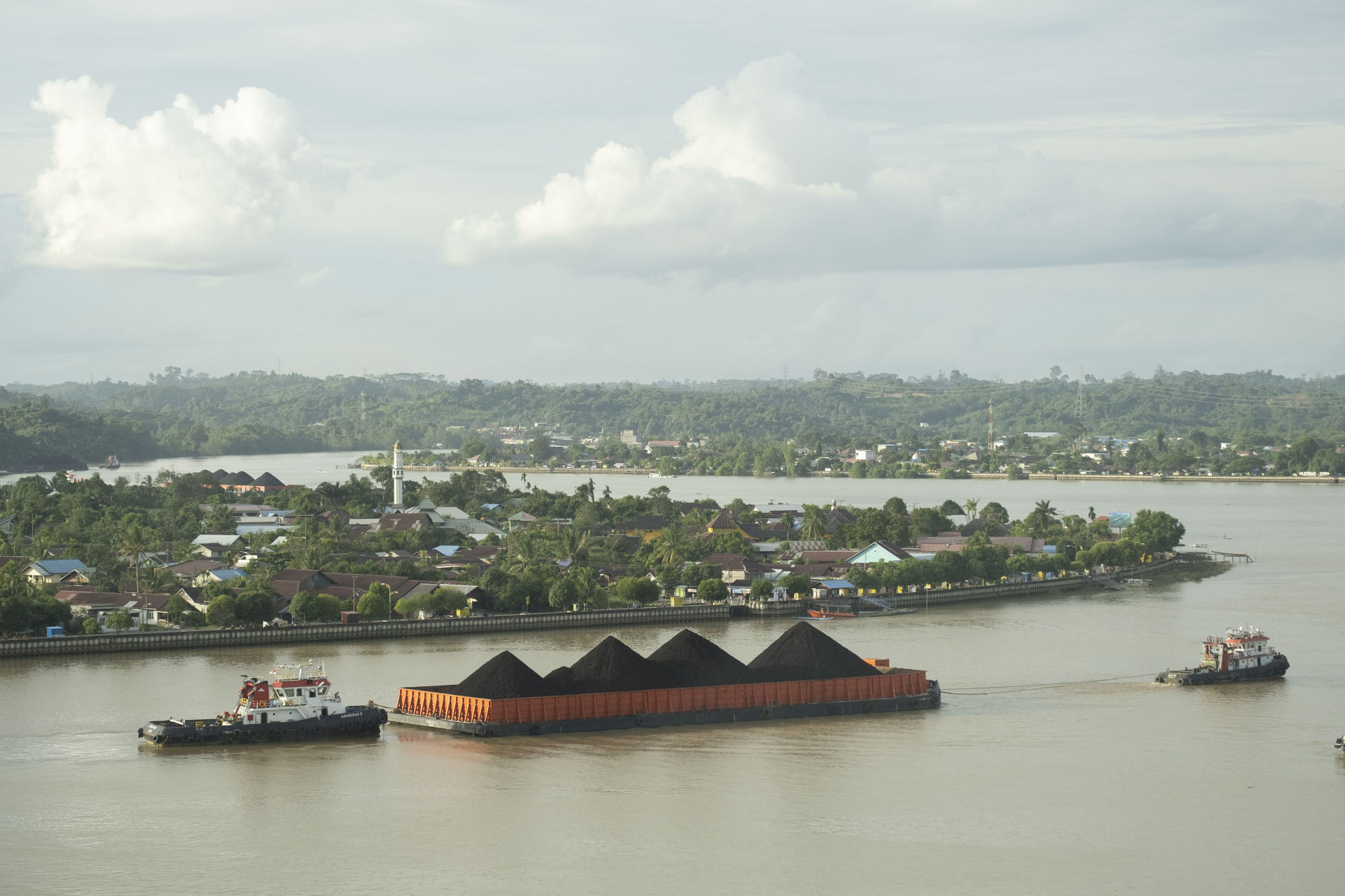
It was while unloading his luggage on this riverbank that Conrad first met Charles Olmeijer (1828-1900), a Dutchman who was William Lingard’s trading agent in Berau. Conrad later wrote about the encounter in his memoirs, describing Olmeijer as “wearing cretonne pyjamas and a thin cotton tank top.”
“His dark hair looked as if it had not been cut for a long time,” Conrad wrote.
Olmeger may have been an unimpressive character, but Conrad made him the protagonist of his first novel. Almayer‘s Foley (1895) was written while the author was still at sea and published when he was 38 years old.
“If I hadn’t met Almayer [Olmeijer] “It went pretty well,” Conrad wrote in his memoir, “and my writing would probably never have been printed.”
Somewhere along this river, among the shops selling fishing tackle and motorboat engines, Almeyer had a home, and it was in this neighborhood that the fictional Almeyer nurtured his dream of finding gold to lift himself out of poverty.
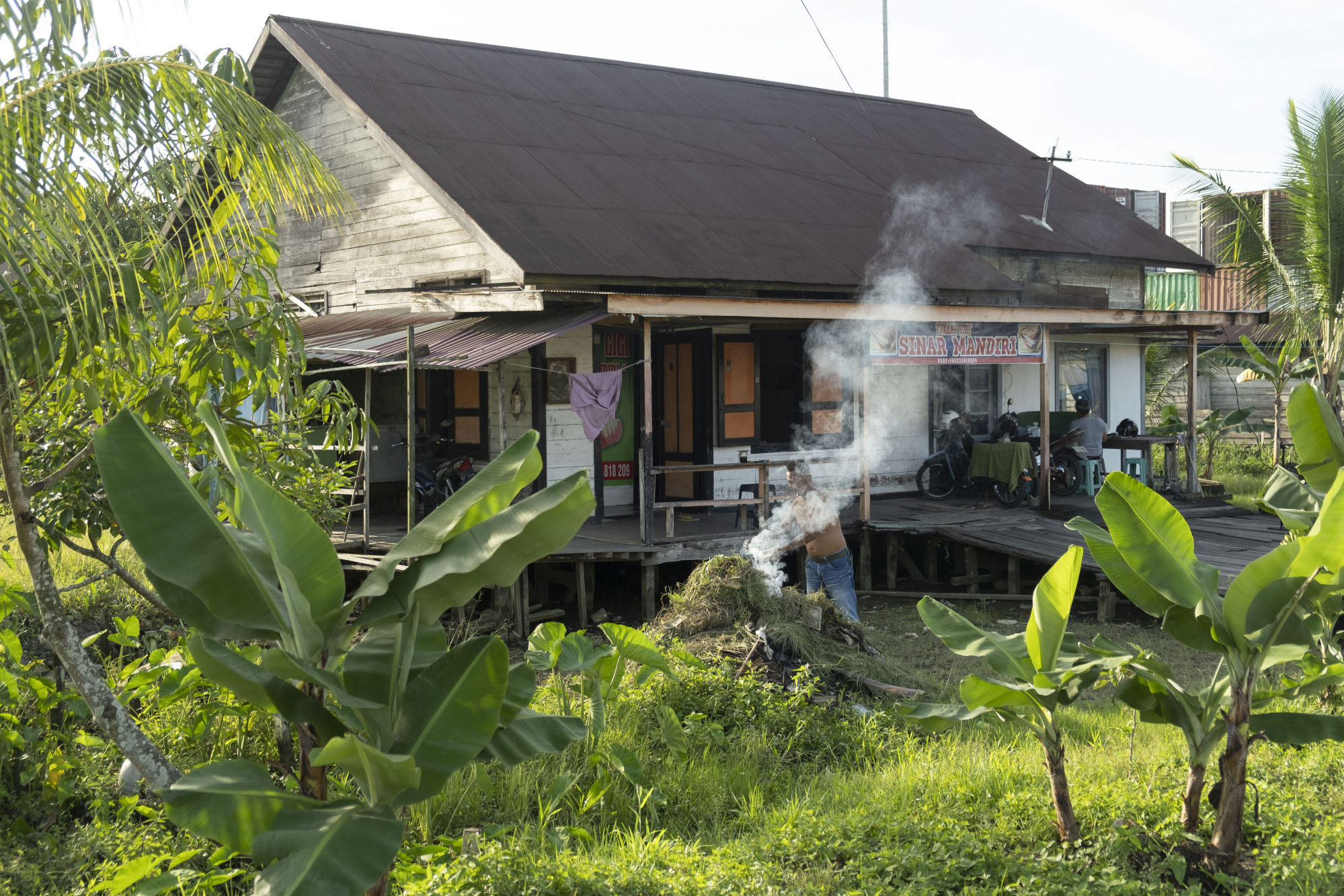
It was also home to the fictional Lingard & Co. warehouse, which is already crumbling at the start of the novel, following the death of another Tom Lingard agent, Peter Willems (the protagonist of the first novel). Exile from the Island – betrays his employer and ruins his business by revealing a secret passage up the river. (The third novel in the trilogy, rescueis about Tom Lingard’s career before he arrived at Sunville.
I noticed a few dilapidated wooden buildings, but I don’t think any of them date from Conrad’s time.
Going in the opposite direction, he was lucky enough to pass workers unloading sacks of rice along with the commotion on the wharf that would have been familiar to Conrad.
Going further, we passed a food cart. Bakuso (Meatballs) and Mee Ayam (Cubed Chicken Noodles) As you walk along, you’ll spot several Bugis schooners, which, although equipped with engines, with their rigging and wooden hulls look just like ships from the age of sail.
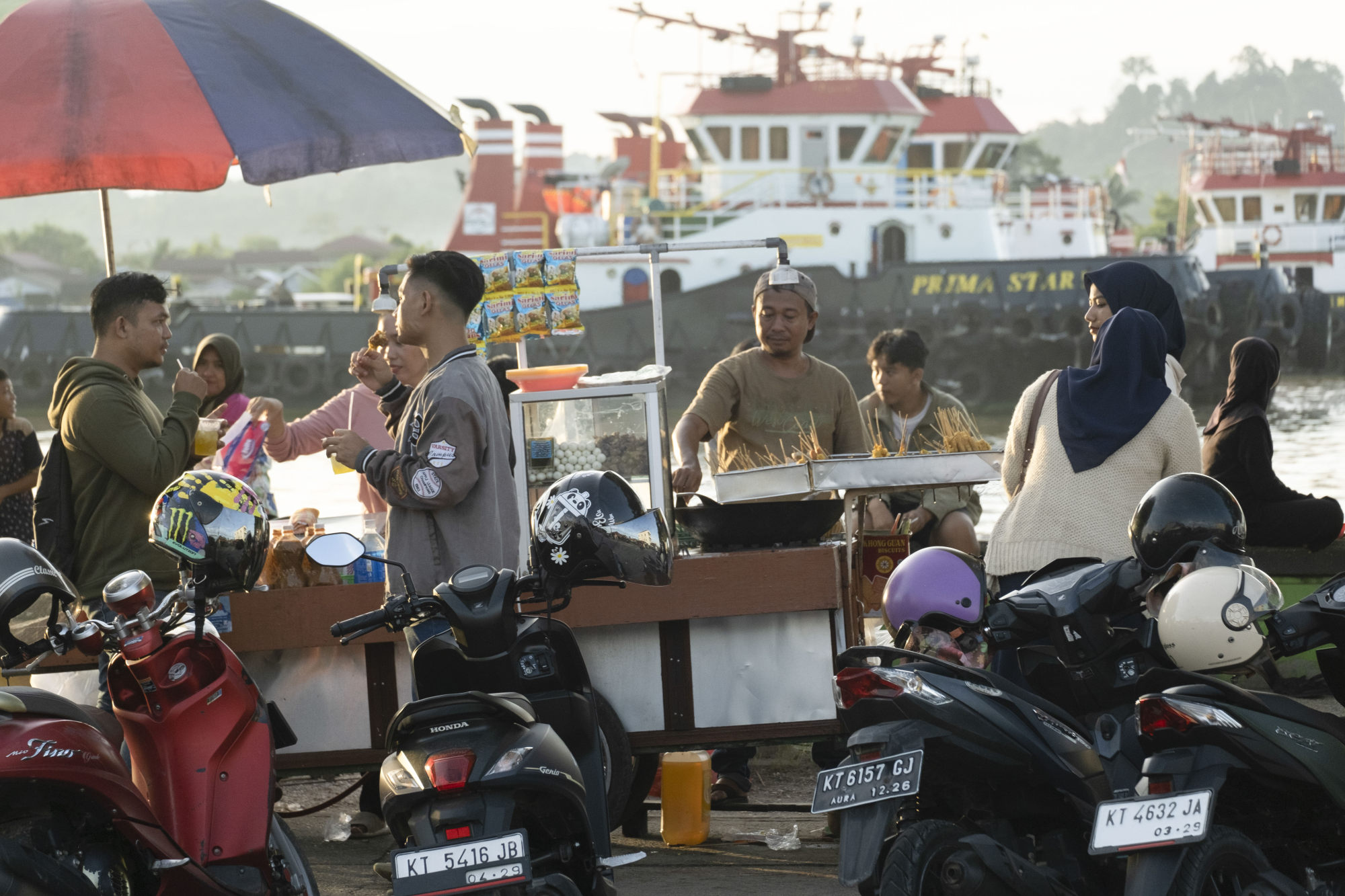
During his visit to Berau, Conrad would have met another of Lingard’s business associates, his nephew: Jim Lingard, a tall, youthful Englishman who would become the first European to settle permanently along the river (Olmeijer, a Eurasian, had been born in the city of Surabaya on the island of Java).
As a title Tuan Made a feudal lord by the Malays, he became the prototype for Conrad’s most sympathetic work, the eponymous protagonist of the English classic. Lord Jim (1900).
Lord Jim It’s the story of an English sailor with “boyish blue eyes” and “good shoulders” who, in a moment of weakness, abandons ship after it strikes a reef.
Stripped of his sailing license and rejected by his peers, Jim is eventually redeemed as a talisman for the Sulawesi settlers at the fictional frontier trading post of Patusan, one of “the lost, forgotten and unknown places of the earth.”
These days, with the construction of an airport and a road to Indonesia’s new capital, Nusantara, Berau doesn’t feel so forgotten.
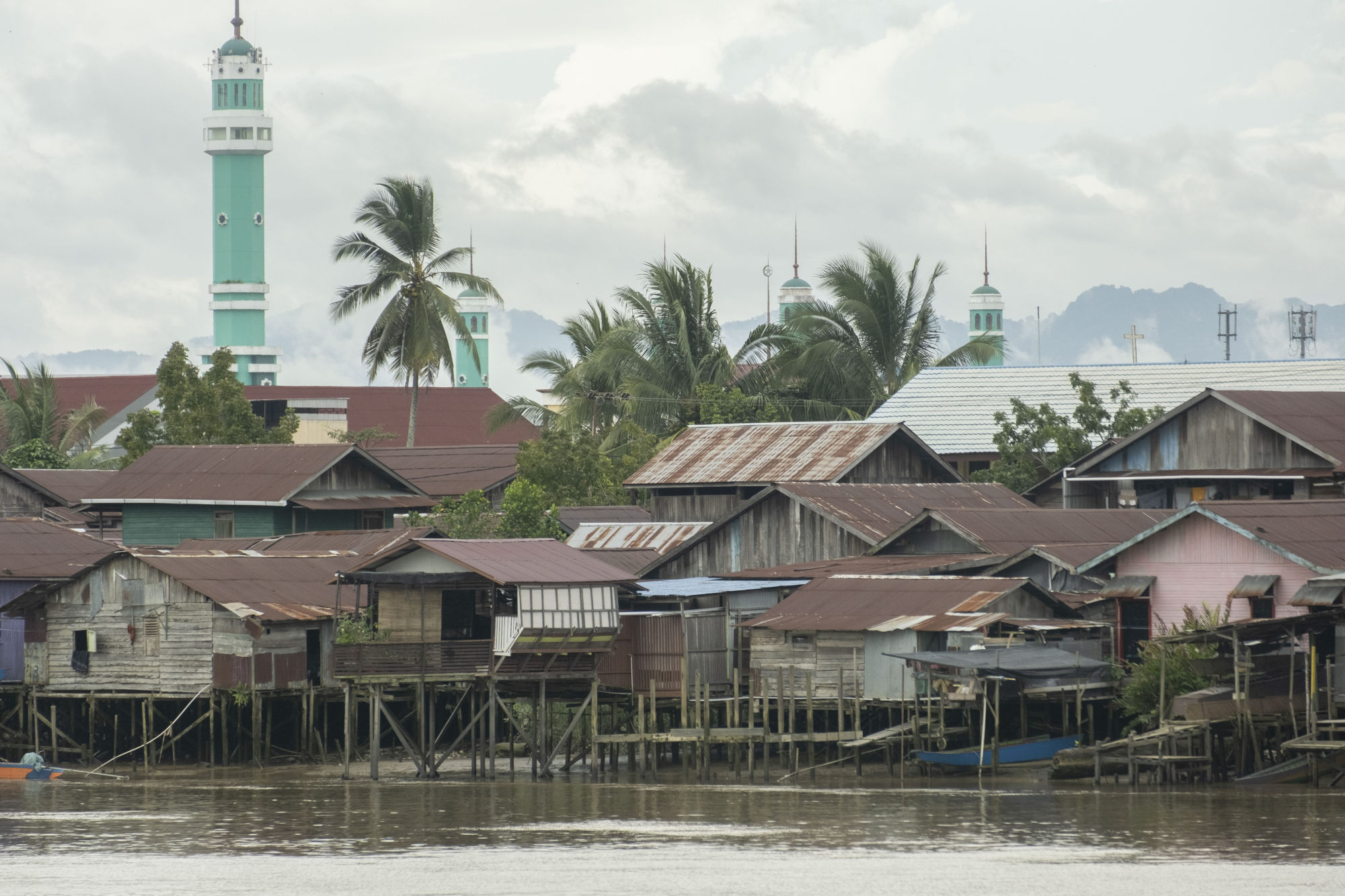
Across the Segai River lies Gunung Tabor village, close to the Patusan spirit, with its rows of wooden houses with tin roofs along the river and the yellow palace of the local sultan, or KeratonIt has the feel of a little fiefdom that Jim might have once ruled.
In the novel, Patusang is divided into two seats of power: one that of the corrupt king Raja Alang, and the other that of King Draming, a Bugis chieftain who is Jim’s allies. In Conrad’s time, Belau functioned as a divided sultanate. After a power struggle in 1810, one royal family ruled from Gunung Tabor, and the other from the town of Sambrian across the Kerai River.
A similar division exists today, but because Indonesia has been a republic since 1950, the sultan’s role is purely ceremonial.
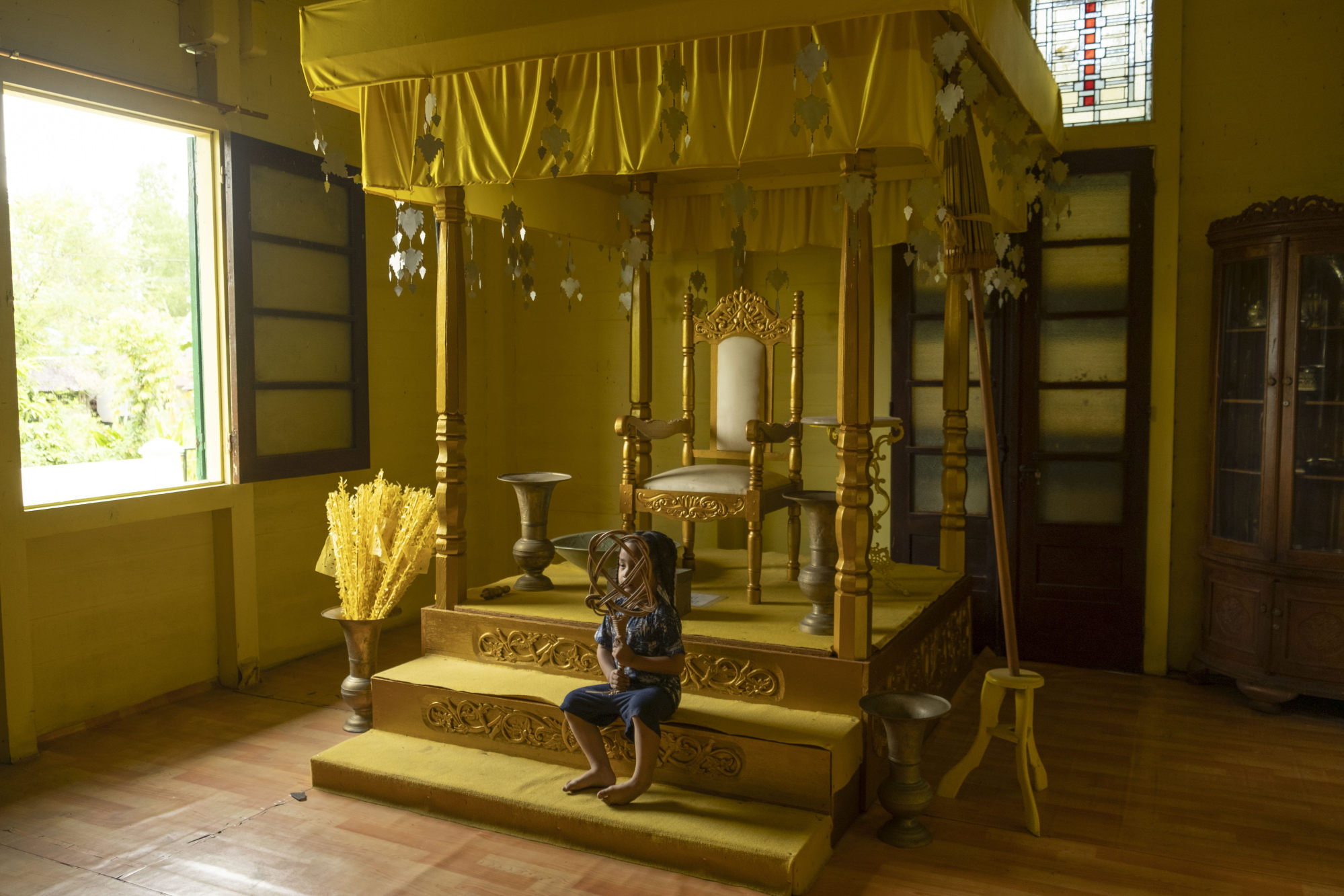
Among the display cases of Qing dynasty vases and decorative kris (daggers), Gunung Tabor Palace also houses a pair of bronze cannons. The cannons were used by the jim to drive away the chief’s enemies and win the trust of the river dwellers. Tuan.
At the Sambrian Palace, or some such, the King of Sambir conspired with the despised Willems to put Tom Lingard out of business. His replacement on the river was a Singapore-based Arab trader and his steamship.
Fiction and reality are alike: Conrad’s employer was also an Arab businessman based in Singapore (his descendants, the Al-Juffrey family, still run businesses in Berau).
With their monopoly gone, the Lingard Company went bankrupt: Tom Lingard lost his beloved brig at sea and squandered the company’s last profits searching for gold upriver.
Almeyer’s dreams of a wealthy retirement are shattered and he succumbs to opium addiction, while young Jim’s remaining sense of self-respect is betrayed by his once again faltering resolve and meets a tragic end.
Their ilk in the real world lived much more contented lives and would likely have been forgotten by now had Conrad not arrived fatefully at this remote trading post.
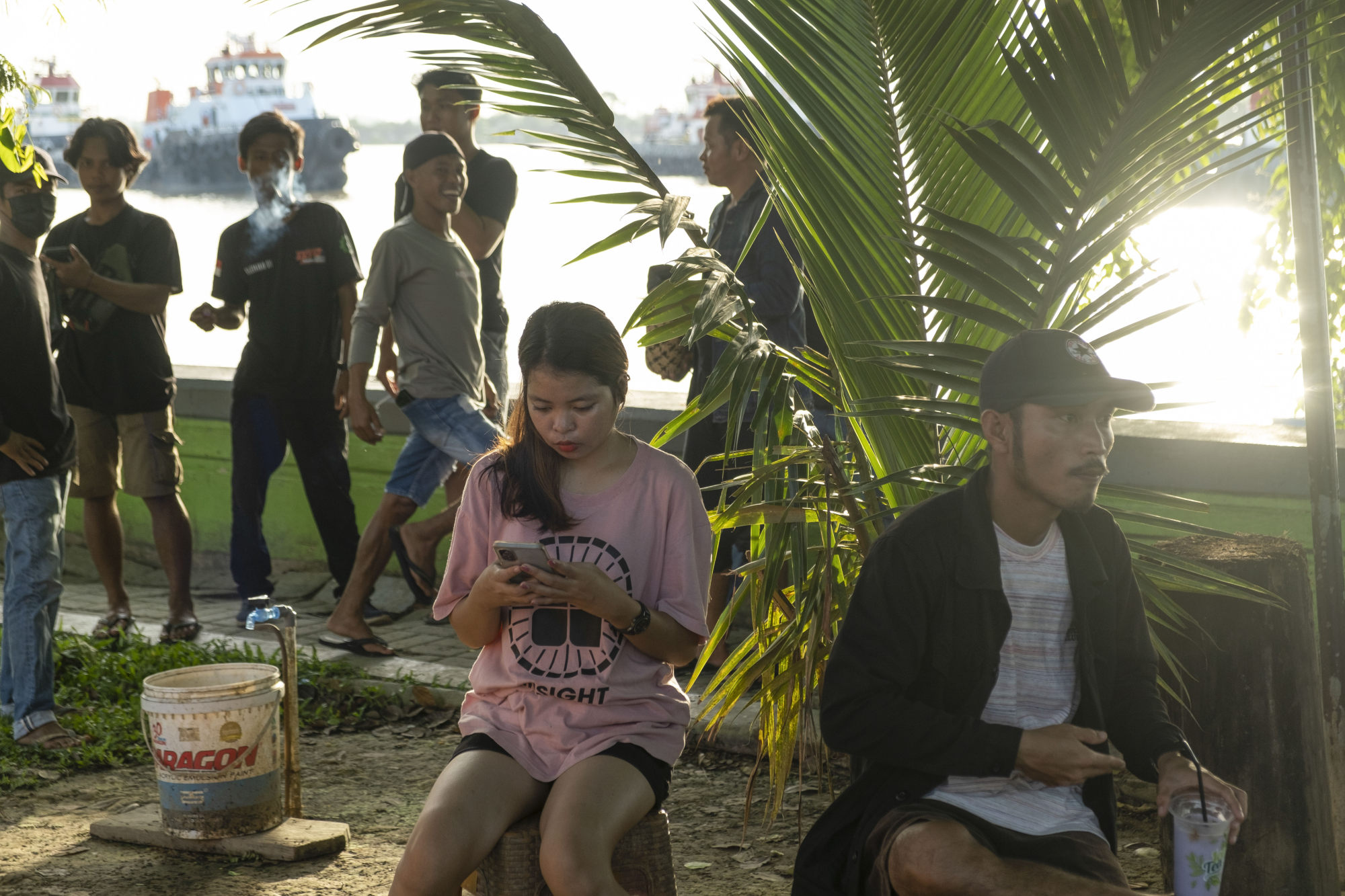
Apart from the two palaces, there wasn’t much to see either as a tourist or a literary pilgrim, so I spent the rest of the afternoon strolling along Segai’s waterfront.
The square is bustling with young people sipping coffee and juice, and the golden light is filled with the sounds of the mosque’s calls and the chirps of swallows.
The Bugis schooner is still at anchor, and huge coal ships sail down the muddy, sparkling river, and among them you might catch the ghost of Conrad’s ship, the Vidal, setting off with a cargo of rattan and resin and enough material to fill several novels.


